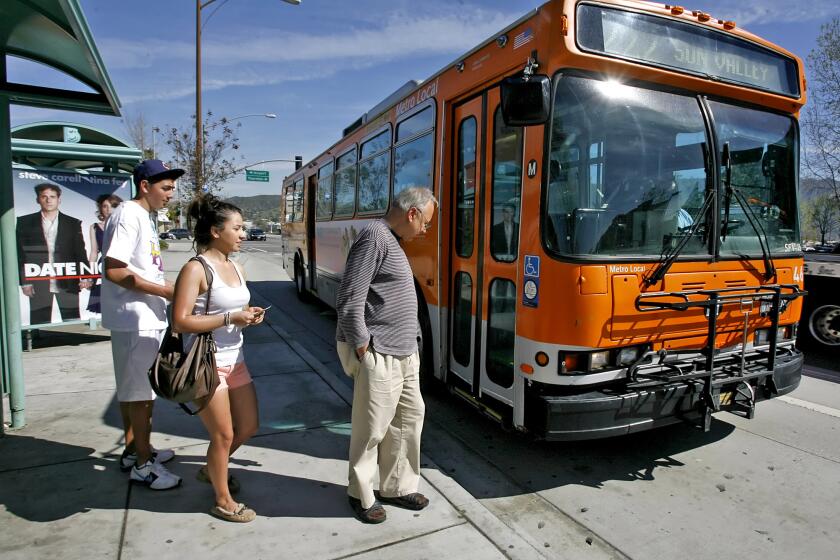Floor Design in 2 Red Line Stations Faulty : Transit: Mezzanines lack drains and expansion joints. Repairs could cost $3 million.
Only months before the first train is scheduled to scoot through the Metro Red Line subway, faulty design work is forcing the Los Angeles County Transportation Commission to partially demolish and rebuild the mezzanine floors in two of its downtown stations.
Change orders for repairs at the Civic Center and Pershing Square stations--a job that will cost an estimated $1.2 million to $3 million--were reported to the board of directors of the commission’s Rail Construction Corp. subsidiary on Monday.
The faulty floors were built without drains or expansion joints. The first defect lets water pool on the floors when they are cleaned, which RCC Red Line Project Manager Charles Stark said can cause the composite flooring to peel. The absence of expansion joints caused the floor to buckle during the recent heat wave, he said.
The first segment of the Red Line, from Union Station through downtown to MacArthur Park, officially is scheduled to open March 15. As recently as last Thursday, however, LACTC staff members were privately talking about opening the line before the end of this year.
Stark said that the flooring flaws will not postpone any opening date, official or not.
News of the faulty floors comes on top of a recent internal Rail Construction Corp. report warning that the floor tiles in two other downtown stations may be too slippery.
The construction corporation board accepted news of the defective floors without comment, but Chairman Robert Kruse dismissed the slippery tiles at the Union Station and Metro Center stations as a trivial matter. The tiles are more likely to enrich personal injury lawyers than endanger the public, he said.
McSpedon and Stark said that the tests that found the floors too slick were in error, and expressed confidence that new tests later this week would find that the floors are safe.
“I don’t want to appear to prejudge this,” Stark told the board, “but I think the new tests will show that the floors have the proper coefficient of resistance.”
He added that the test results were suspicious because they showed that the floors were more slippery for shoe leather than for neoprene, another material often used to sole shoes. Neoprene is usually more slippery than leather, he said.
“That alone would have caused us to do the tests over,” he said.
The cracked and buckled floors are a more serious problem, construction officials said.
Each of the five stations on the first segment of the subway is two stories deep, with a ticketing mezzanine over the platform. None of the stations have drains on the mezzanine levels, Stark said, but this is a problem only for the composite flooring in Pershing Square and Civic Center. The other stations have ceramic tile floors and should not be affected by pools of standing water left behind by cleaning crews.
To correct the problem, Stark said the mezzanine floors will have to be partially demolished. The flooring and top layer of concrete underneath the flooring will be torn up, and troughs will be cut into the underlying structural concrete to permit the installation of drains and pipes. Expansion joints will then be cut into the floor slabs and the flooring will be reinstalled, he said.
Neither McSpedon nor Stark could explain how the installation of joints and drains was overlooked. The station designs were supervised by the Southern California Rapid Transit District before the Rail Construction Corp. took over management of the project in 1990.
Stark said the oversights and corrective measures will not affect the structural integrity of the stations.
More to Read
Start your day right
Sign up for Essential California for news, features and recommendations from the L.A. Times and beyond in your inbox six days a week.
You may occasionally receive promotional content from the Los Angeles Times.






